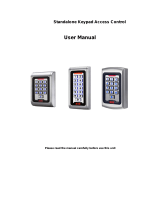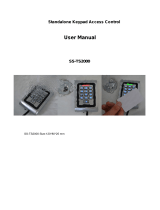
Lesen Sie vor der Verwendung dieses Geräts diese
Bedienungsanleitung, die wichtige Betriebsanleitungen für
den sicheren Gebrauch und die Kenntnis der Funkfrequenz
RF ENERGIE EXPOSURE UND PRODUKTSICHERHEIT
Dieses Gerät verwendet elektromagnetische Energie im Radiofrequenzspektrum (RF), um die
Kommunikation zwischen zwei oder mehr Benutzern über eine Distanz hinweg bereitzustellen.
RF-Energie, die bei unsachgemäßer Verwendung biologische Schäden verursachen kann.
Alle Retekess-Funkgeräte werden entwickelt, hergestellt und getestet, um sicherzustellen, dass sie
den von der Regierung festgelegten RF-Expositionswerten entsprechen. Darüber hinaus
empfehlen Hersteller den Benutzern der Funkgeräte auch spezifische Bedienungsanleitungen.
Diese Anweisungen sind wichtig, da sie die Benutzer über die Einwirkung von RF-Energie
informieren und einfache Verfahren für deren Steuerung enthalten.
Lokale Regierungsbestimmungen
Wenn Funkgeräte als Folge einer Beschäftigung verwendet werden, müssen die Benutzer nach
den örtlichen Regierungsvorschriften ihre Exposition genau kennen und kontrollieren können, um
den beruflichen Anforderungen zu genügen. Die Erkennung der Exposition kann durch die
Verwendung eines Produktetiketts erleichtert werden, das die Benutzer zu bestimmten
Benutzerinformationen führt. Ihr Retekess-Funkgerät verfügt über ein RF-Exposure-Produktetikett.
Außerdem enthält Ihr Retekess-Benutzerhandbuch oder eine separate Sicherheitsbroschüre
Informationen und Betriebsanleitungen, die zur Kontrolle der RF-Belastung und zur Einhaltung der
Konformitätsanforderungen erforderlich sind.
Radio-Lizenz (falls zutreffend)
Die Regierungen halten die Funkgeräte in der Klassifizierung, die Geschäftsradios arbeiten mit
Funkfrequenzen, die von den lokalen Funkverwaltungsabteilungen (FCC, ISED, BAKOM, ANFR,
BFTK, Bundesnetzagentur ...) reguliert werden. Um auf diesen Frequenzen übertragen zu können,
benötigen Sie eine Lizenz. Die genaue Klassifizierung und Verwendung Ihrer Funkgeräte erfahren
Sie bei den zuständigen Verwaltungsstellen der örtlichen Behörden.
Die Verwendung dieses Radios außerhalb des Landes, in dem es verteilt werden soll, unterliegt
den gesetzlichen Bestimmungen und kann verboten werden.
Eigenmächtige Änderung und Einstellung
Änderungen oder Modifikationen, die nicht ausdrücklich von der für die Einhaltung der
Bestimmungen verantwortlichen Partei genehmigt wurden, können die Berechtigung des
Benutzers, die von den lokalen
Funkverwaltungsabteilungen für den Betrieb dieses Funkgeräts erteilt wurde, aufheben und sollten
nicht
vorgenommen werden. Um die entsprechenden Anforderungen zu erfüllen, sollten die
Einstellungen des Senders nur von oder unter der Aufsicht einer Person vorgenommen werden,
die als technisch qualifiziert für die Wartung und Reparatur des Senders in privaten Landfunk- und
Festnetzdiensten zertifiziert ist und von einer Organisation, die dessen Nutzer vertritt, zertifiziert ist
Dienstleistungen.
Der Austausch von Senderkomponenten (Quarz, Halbleiter usw.), die nicht durch die Autorisierung
des Funkmanagements der örtlichen Behörden autorisiert wurden, könnte gegen die Regeln
verstoßen.
FCC-Anforderungen:
• Dieses Gerät entspricht Abschnitt 15 der FCC-Bestimmungen. Der Betrieb unterliegt den
folgenden zwei Bedingungen:
(1) Dieses Gerät darf keine schädlichen Interferenzen verursachen
(2) Dieses Gerät muss alle empfangenen Interferenzen akzeptieren, einschließlich Interferenzen,



























